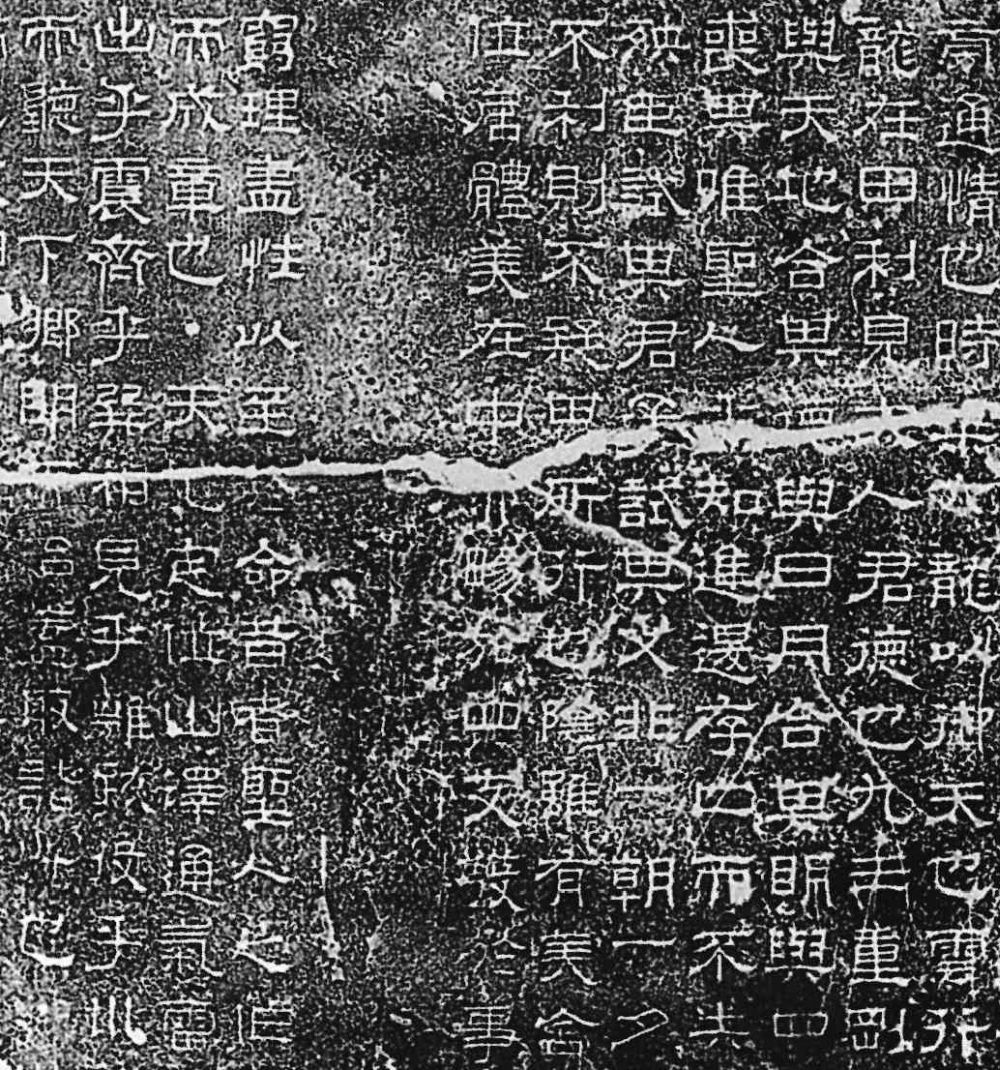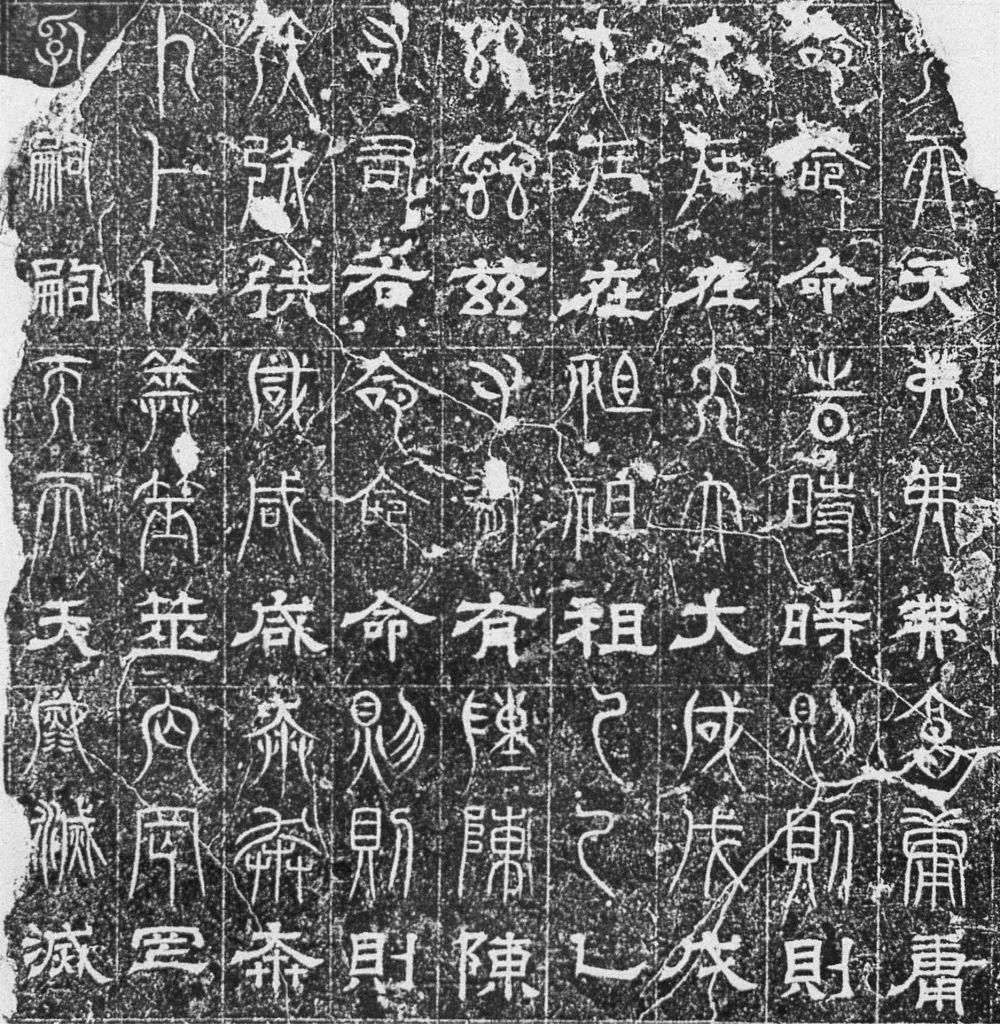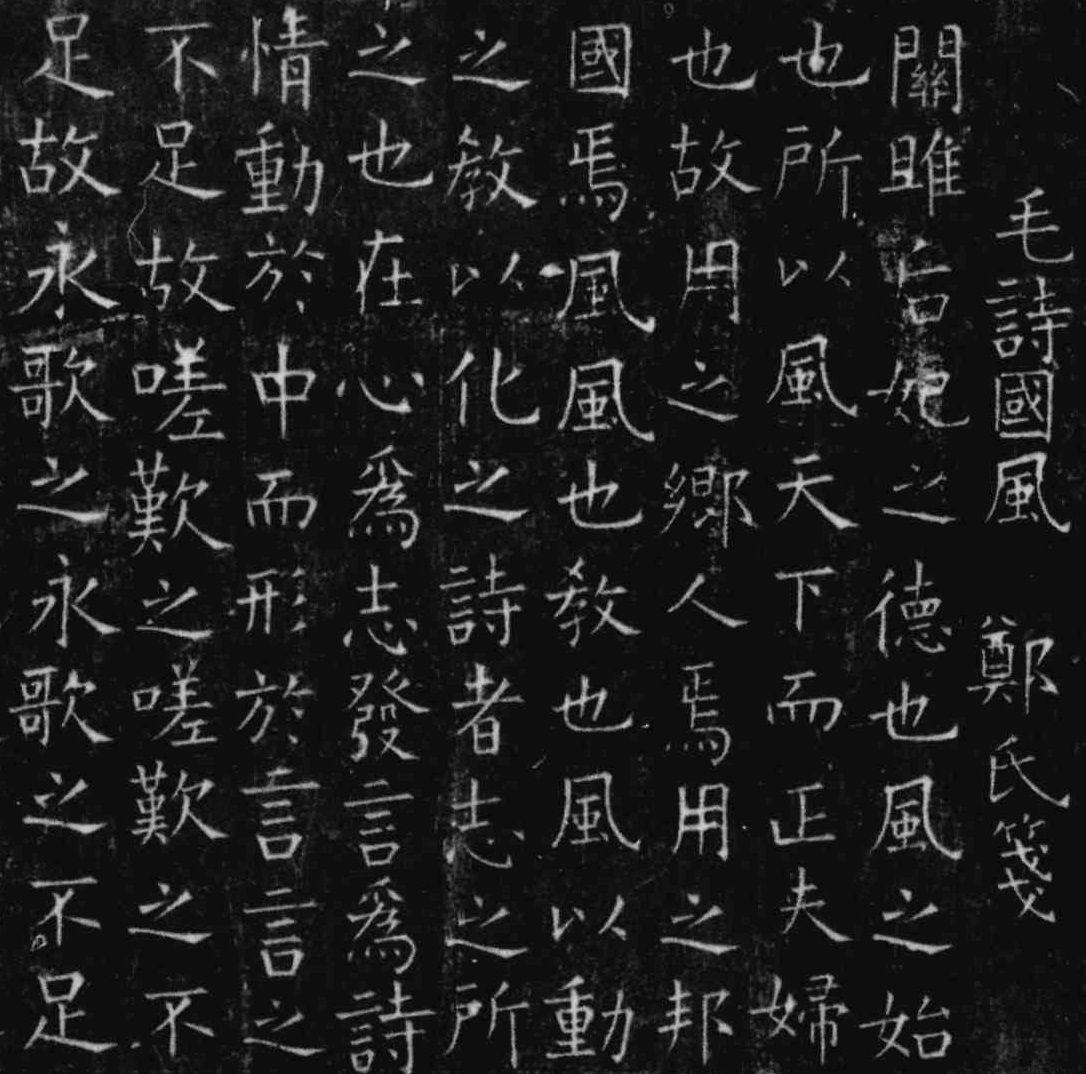"Stone Classics" are texts of the Confucian Classics (jing 經) that were incised into stone tablets. Through history there were several enterprises that envisaged to provide a correct and authoritative text of the Classics that was at the same time written in an exemplary calligraphic style. The first time that Classic texts were incised into stone was during the reign of Emperor Ping 漢平帝 (r. 1 BCE-5 CE) of the late Former Han period 前漢 (206 BCE-8 CE). The regent and later usurper Wang Mang 王莽 (r. 8-22 CE) ordered Zhen Feng 甄豐 to "fossilize" the texts of the books Yijing 易經, Shangshu 尚書, Shijing 詩經 and Zuozhuan 左傳 in imitation of an old-text version.
The second occasion was under Emperor Ling 漢靈帝 (r. 167-189) at the end of the Later Han period 後漢 (25-220 CE). In 175 CE the books Yijing 易經, Shangshu 尚書, Shijing 詩經, Yili 儀禮, Gongyangzhuan 公羊傳 and Lunyu 論語 were incised into 46 stone slabs. The stelae were erected on the compound in front of the gate to the National University (taixue 太學) in the capital Luoyang 洛陽 (modern Luoyang, Henan). These were the Xiping Stone Classics 熹平石經, called so because they were erected during the Xiping reign-period 熹平 (172-177). The text had been calligraphed by Cai Yong 蔡邕. While some pieces of the Xiping Stone Classics have survived that were unearthed in 1922, no fragment or rubbing of the first Stone Classics have survived.
 |
Rubbing of a surviving fragment of the Xiping Stone Classics. Source: Zhongguo meishu quanji bianji weiyuanhui 1993: Vol. 1, no. 94. |
During the Zhengshi reign-period 正始 (240-248) of the Wei period 曹魏 (220-265) it was again ordered to bring the texts of the Confucian Classics into stone, the so-called Zhengshi Stone Classics 正始石經. The text of the Zhengshi Stone Classics from 241 was written in three typefaces, namely ancient script (guwen 古文), seal script (zhuanwen 篆書) and chancery script (lishu 隸書), and are therefore also called the "Three-Type Stone Classics" (Santi shijing 三體石經).
 |
Rubbing of a surviving fragment of the Zhengshi Stone Classics. Source: Zhongguo meishu quanji bianji weiyuanhui 1993: Vol. 2, no. 7. |
The Kaicheng Stone Classics 開成石經, created between 833 and 837, were produced during the reign-period Kaicheng 開成 (836-840) of Emperor Wenzong 唐文宗 (r. 826-840) of the Tang dynasty 唐 (618-907) and included all of the Classics, except the book Mengzi 孟子.
 |
Rubbing of a surviving fragment of the Kaicheng Stone Classics. Source: Zhongguo meishu quanji bianji weiyuanhui 1993: Vol. 3, no. 84. |
Meng Chang 孟昶 (r. 934-965), ruler of the state of Shu 蜀 during the Five Dynasties period 五代 (907-960), had written the Stone Classics from Shu 蜀石經 from 944 that included eleven texts, and not the Xiaojing 孝經, Erya 爾雅 and Mengzi. It was the first time that commentaries were also included into the incised text, written in half-size characters that were written in double columns under the commented text. The Shu Classics were erected in the capital of Shu, Chengdu 成都, but served as authoritative version for a large part of the Southern Song period. In 1938 fragments of these stelae were discovered.
The whole corpus of the Thirteen Classics was for the first time cast into stone by Emperor Taizong 宋太宗 (r. 976-997) of the Song dynasty 宋 (960-1279) in 1061, in the capital Kaifeng 開封 (modern Kaifeng, Henan), and in seal and chancery type. The same did Emperor Gaozong 宋高宗 (r. 1127-1162), the first ruler of the Southern Song 南宋 (1127-1279), who had the stelae set up in the new National University in the capital Lin'an 臨安 (modern Hangzhou 杭州, Zhejiang). The sample text was written by the emperor himself. Of the two hundred stones, seventy are still to be seen.
The Qianlong Emperor 乾隆 (r. 1735-1796) of the Qing dynasty 清 (1644-1911) had produced stone classics in the compound of the Directorate of Education (guozijian 國子監) in Beijing, but the original text on the 190 stones was erased and overwritten during the Jiaqing reign-period 嘉慶 (1796-1820), because the incising had not been done very well in the original version.
Although Chang'an (modern Xi'an, Shaanxi) had ceased to be capital after the end of the Tang period, the city remained a place where regularly stone stelae were erected. In 1087 Emperor Zhezong 宋哲宗 (r. 1085-1100) of the Song was the first who created a ground for a "forest of steles" (beilin 碑林) in Chang'an, and in 1090 the ancient Kaicheng Stone Classics were moved to this place, where they survived in total. The stelae of the Xi'an forest of steles were inscribed with all Classics except the Mengzi, which was only added during the Kangxi reign-period 康熙 (1662-1722) of the Qing period. The Forest includes 114 stelae inscribed with 655,000 characters of the main texts and many commentaries: Wang Bi's 王弼 commentary to the Yijing, the forged Kong Anguo 孔安國 commentary to the Shangshu, Zheng Xuan's 鄭玄 commentary to the Shijing, Zhouli 周禮, Yili and Liji 禮記, Du Yu's 杜預 commentary to the Zuozhuan, He Xiu's 何休 commentary to the Gongyangzhuan, Fang Ning's 范寧 to the Guliangzhuan 穀梁傳, He Yan's 何晏 to the Lunyu, Emperor Xuanzong's 唐玄宗 (r. 712-755) commentary to the Xiaojing, Guo Pu's 郭璞 commentary to the glossary Erya, and Zhu Xi's 朱熹 (1130-1200) commentary to the Mengzi.
The oldest research to the Stone Classics was written by Gu Yanwu 顧炎武 (Shijing kao 石經考), followed by Wan Sitong's 萬斯同 Shijing kao 石經考. In modern times Ma Heng 馬衡 has written the Han shijing jicun 漢石經集存, a collection of remnants of Han period texts, and Zhang Guogan 張國淦 the Lidao shijing kao 歷代石經考.